Ayman Al-Kababji
AI Radiologist: Revolutionizing Liver Tissue Segmentation with Convolutional Neural Networks and a Clinician-Friendly GUI
Jun 11, 2024



Abstract:Artificial Intelligence (AI) is a pervasive research topic, permeating various sectors and applications. In this study, we harness the power of AI, specifically convolutional neural networks (ConvNets), for segmenting liver tissues. It also focuses on developing a user-friendly graphical user interface (GUI) tool, "AI Radiologist", enabling clinicians to effectively delineate different liver tissues (parenchyma, tumors, and vessels), thereby saving lives. This endeavor bridges the gap between academic research and practical, industrial applications. The GUI is a single-page application and is designed using the PyQt5 Python framework. The offline-available AI Radiologist resorts to three ConvNet models trained to segment all liver tissues. With respect to the Dice metric, the best liver ConvNet scores 98.16%, the best tumor ConvNet scores 65.95%, and the best vessel ConvNet scores 51.94%. It outputs 2D slices of the liver, tumors, and vessels, along with 3D interpolations in .obj and .mtl formats, which can be visualized/printed using any 3D-compatible software. Thus, the AI Radiologist offers a convenient tool for clinicians to perform liver tissue segmentation and 3D interpolation employing state-of-the-art models for tissues segmentation. With the provided capacity to select the volumes and pre-trained models, the clinicians can leave the rest to the AI Radiologist.
Scheduling Techniques for Liver Segmentation: ReduceLRonPlateau Vs OneCycleLR
Feb 13, 2022Abstract:Machine learning and computer vision techniques have influenced many fields including the biomedical one. The aim of this paper is to investigate the important concept of schedulers in manipulating the learning rate (LR), for the liver segmentation task, throughout the training process, focusing on the newly devised OneCycleLR against the ReduceLRonPlateau. A dataset, published in 2018 and produced by the Medical Segmentation Decathlon Challenge organizers, called Task 8 Hepatic Vessel (MSDC-T8) has been used for testing and validation. The reported results that have the same number of maximum epochs (75), and are the average of 5-fold cross-validation, indicate that ReduceLRonPlateau converges faster while maintaining a similar or even better loss score on the validation set when compared to OneCycleLR. The epoch at which the peak LR occurs perhaps should be made early for the OneCycleLR such that the super-convergence feature can be observed. Moreover, the overall results outperform the state-of-the-art results from the researchers who published the liver masks for this dataset. To conclude, both schedulers are suitable for medical segmentation challenges, especially the MSDC-T8 dataset, and can be used confidently in rapidly converging the validation loss with a minimal number of epochs.
Automated liver tissues delineation based on machine learning techniques: A survey, current trends and future orientations
Mar 10, 2021



Abstract:There is no denying how machine learning and computer vision have grown in the recent years. Their highest advantages lie within their automation, suitability, and ability to generate astounding results in a matter of seconds in a reproducible manner. This is aided by the ubiquitous advancements reached in the computing capabilities of current graphical processing units and the highly efficient implementation of such techniques. Hence, in this paper, we survey the key studies that are published between 2014 and 2020, showcasing the different machine learning algorithms researchers have used to segment the liver, hepatic-tumors, and hepatic-vasculature structures. We divide the surveyed studies based on the tissue of interest (hepatic-parenchyma, hepatic-tumors, or hepatic-vessels), highlighting the studies that tackle more than one task simultaneously. Additionally, the machine learning algorithms are classified as either supervised or unsupervised, and further partitioned if the amount of works that fall under a certain scheme is significant. Moreover, different datasets and challenges found in literature and websites, containing masks of the aforementioned tissues, are thoroughly discussed, highlighting the organizers original contributions, and those of other researchers. Also, the metrics that are used excessively in literature are mentioned in our review stressing their relevancy to the task at hand. Finally, critical challenges and future directions are emphasized for innovative researchers to tackle, exposing gaps that need addressing such as the scarcity of many studies on the vessels segmentation challenge, and why their absence needs to be dealt with in an accelerated manner.
A survey of recommender systems for energy efficiency in buildings: Principles, challenges and prospects
Feb 09, 2021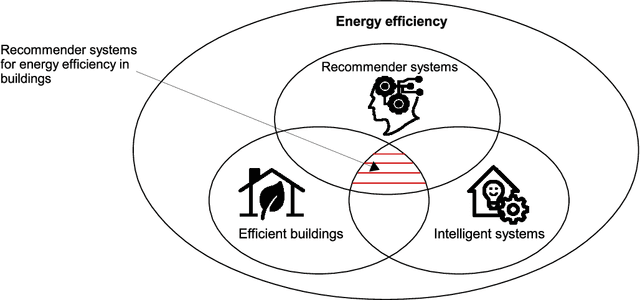
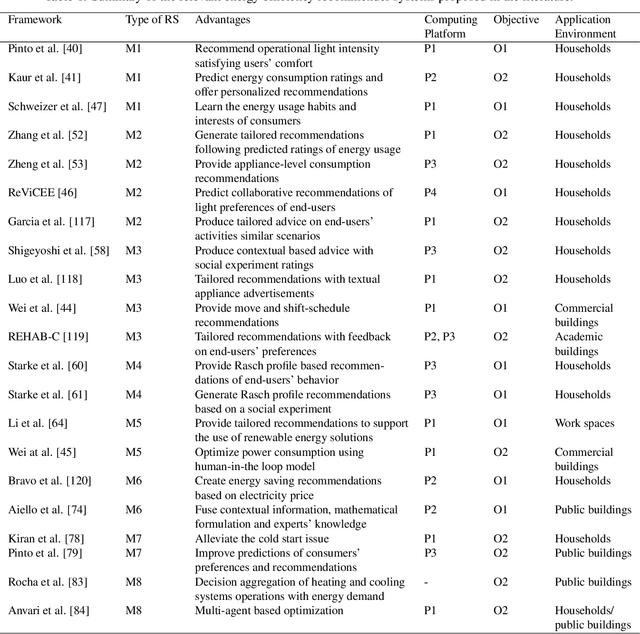

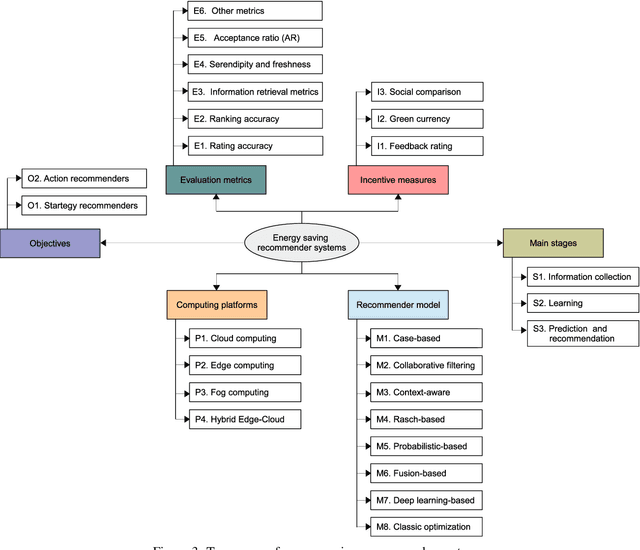
Abstract:Recommender systems have significantly developed in recent years in parallel with the witnessed advancements in both internet of things (IoT) and artificial intelligence (AI) technologies. Accordingly, as a consequence of IoT and AI, multiple forms of data are incorporated in these systems, e.g. social, implicit, local and personal information, which can help in improving recommender systems' performance and widen their applicability to traverse different disciplines. On the other side, energy efficiency in the building sector is becoming a hot research topic, in which recommender systems play a major role by promoting energy saving behavior and reducing carbon emissions. However, the deployment of the recommendation frameworks in buildings still needs more investigations to identify the current challenges and issues, where their solutions are the keys to enable the pervasiveness of research findings, and therefore, ensure a large-scale adoption of this technology. Accordingly, this paper presents, to the best of the authors' knowledge, the first timely and comprehensive reference for energy-efficiency recommendation systems through (i) surveying existing recommender systems for energy saving in buildings; (ii) discussing their evolution; (iii) providing an original taxonomy of these systems based on specified criteria, including the nature of the recommender engine, its objective, computing platforms, evaluation metrics and incentive measures; and (iv) conducting an in-depth, critical analysis to identify their limitations and unsolved issues. The derived challenges and areas of future implementation could effectively guide the energy research community to improve the energy-efficiency in buildings and reduce the cost of developed recommender systems-based solutions.
* 35 pages, 11 figures, 1 table
Data fusion strategies for energy efficiency in buildings: Overview, challenges and novel orientations
Sep 14, 2020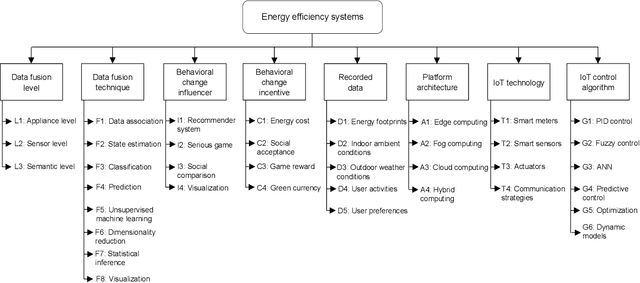
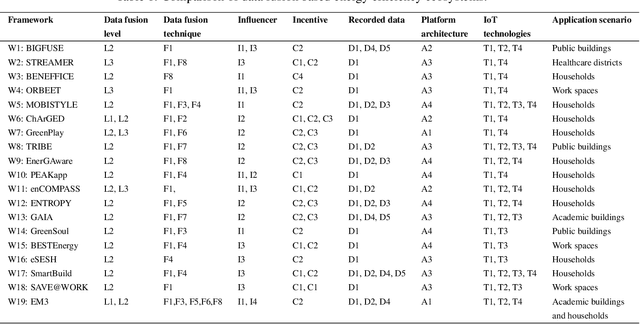
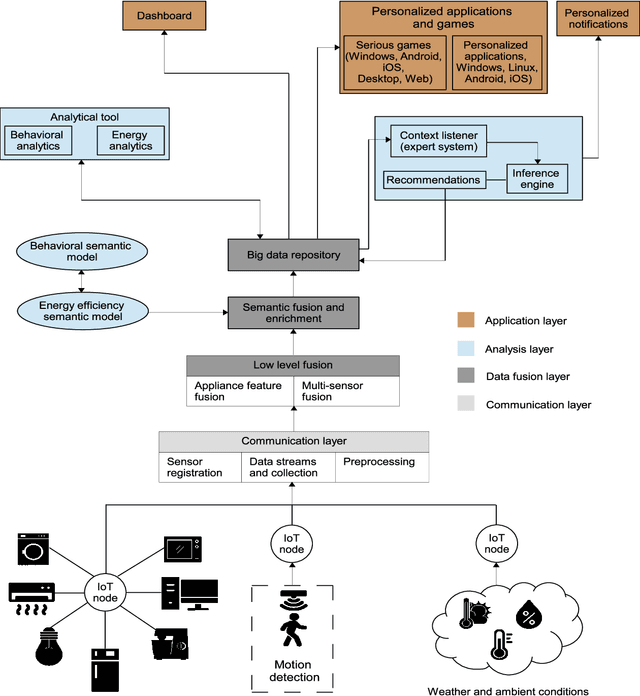
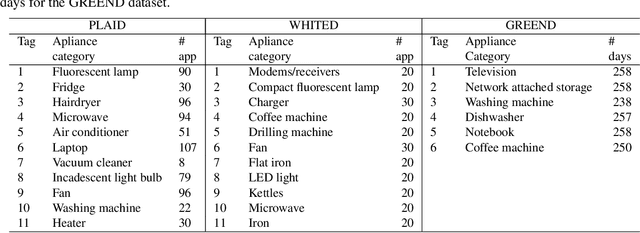
Abstract:Recently, tremendous interest has been devoted to develop data fusion strategies for energy efficiency in buildings, where various kinds of information can be processed. However, applying the appropriate data fusion strategy to design an efficient energy efficiency system is not straightforward; it requires a priori knowledge of existing fusion strategies, their applications and their properties. To this regard, seeking to provide the energy research community with a better understanding of data fusion strategies in building energy saving systems, their principles, advantages, and potential applications, this paper proposes an extensive survey of existing data fusion mechanisms deployed to reduce excessive consumption and promote sustainability. We investigate their conceptualizations, advantages, challenges and drawbacks, as well as performing a taxonomy of existing data fusion strategies and other contributing factors. Following, a comprehensive comparison of the state-of-the-art data fusion based energy efficiency frameworks is conducted using various parameters, including data fusion level, data fusion techniques, behavioral change influencer, behavioral change incentive, recorded data, platform architecture, IoT technology and application scenario. Moreover, a novel method for electrical appliance identification is proposed based on the fusion of 2D local texture descriptors, where 1D power signals are transformed into 2D space and treated as images. The empirical evaluation, conducted on three real datasets, shows promising performance, in which up to 99.68% accuracy and 99.52% F1 score have been attained. In addition, various open research challenges and future orientations to improve data fusion based energy efficiency ecosystems are explored.
 Add to Chrome
Add to Chrome Add to Firefox
Add to Firefox Add to Edge
Add to Edge